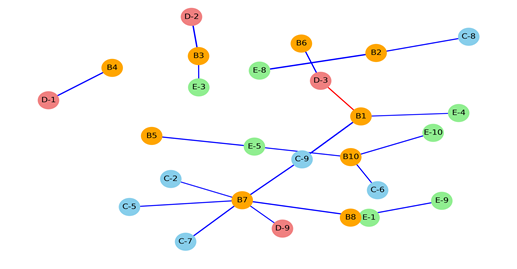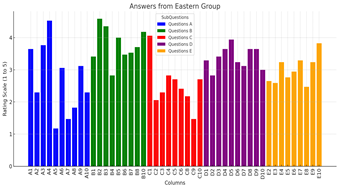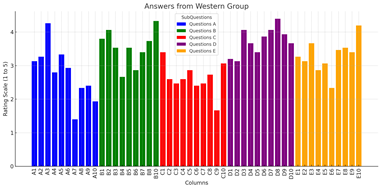[한류] Hallyu and Acculturation of International Students in Korea: Cross-cultural Analysis (한류가 유학생의 문화적응에 미치는 영향)
Korean Wave has had a great impact on international students in Korea and that the aspect of Korean language proficiency should be emphasized in any cultural adaptability scale.
Author: Jungyeon Koo, Minkyung Kim
(PhD Candidates at Seoul National University)
The rise of Hallyu isn’t just shaping global pop culture—it’s transforming the lives of international students in Korea and influencing their cultural adaptation. Eastern students, who are more familiar with Hallyu due to early exposure, tend to adjust culturally more easily, benefiting from higher levels of language proficiency and experiencing fewer difficulties in living and studying in Korea compared to their Western peers.
Hallyu, or the Korean Wave, has become a cornerstone of South Korea's global influence, operating as a form of soft power. Defined by Joseph Nye,[1] soft power refers to a nation's ability to attract and appeal without coercion, and South Korea has excelled in this arena. Recent IMF rankings place South Korea at the top of the global soft power index, driven by the global success of its cultural exports, such as BTS, Blackpink, Parasite, and Squid Game.
One of Hallyu's ripple effects as soft power is the steady rise in the number of international students in Korea, with over 180,000 recorded in 2023. For many international students, Hallyu serves as a key motivator in their decision to study in Korea. Despite the close relationship between Hallyu and the increase in overseas students in Korea, few studies have focused on illuminating their interplay and the cultural adaptation abilities of these international students within the context of Hallyu.
As previous studies have explored cultural adaptation in Western contexts, research on the specific interaction between Hallyu and international students in Korea remains underexplored. Our study addresses this gap by investigating the relationship between Hallyu and the cultural adaptation of international students in Korea while developing an acculturation measurement tool that uses Hallyu as a key factor. Moreover, cross-cultural perspectives between Eastern and Western students are examined in terms of their adaptation to Korea and their varying levels of understanding of Hallyu.
한국 유학 동기
Hallyu as a Motivator to Study in Korea
The Korean Wave (Hallyu) plays a crucial role in motivating international students to study in Korea. Hallyu content—including K-pop and K-drama—not only inspires short-term visits but also drives decisions to pursue education in Korea, thereby contributing to the growing diversity of international students. Given its significance, studies highlight Hallyu’s role in fostering cultural affinity, language acquisition, and long-term connections with Korea. For example, Bae, Lee, and Lee (2022)[2] explored the mutual relationship between international students and Hallyu through in-depth interviews, revealing that initial exposure to Hallyu content often leads to a fascination with Korean culture and language, which in turn influences study-abroad decisions. Similarly, Kim and Cho (2024)[3] examined the impact of Hallyu on Vietnamese youth, finding that Korean media serves as a catalyst for language learning and cultural identity formation. These studies underscore the significant role of Hallyu in shaping global cultural and linguistic environments, although further research with broader participant samples is needed to capture its full impact.
문화적응도
Hallyu and Acculturation of International Students
Another important academic approach to studying international students involves investigating whether they adapt well to their environment. Research on the cultural adaptation of international students can be broadly categorized into three main areas:
- Studies on the current state and factors influencing cultural adaptation [4]
- Studies on cultural adaptation stress [5]
- Studies on cultural adaptation strategies [6]
Other studies have explored the relationship between personal background and cultural adaptation, as well as the links between mental health and cultural adaptation, and psychological and sociocultural adaptation. However, the existing research has primarily focused on Western perspectives, such as those from the United States and Europe—major destinations for studying abroad. Students from around the world have only recently begun to cluster in Korea following the global spread of Hallyu. Despite Korea’s growing global influence, relatively limited attention has been directed to those studying in Korea.
Recently, a few studies have attempted to investigate the cultural adaptation of overseas students in Korea. For example, Kim (2016)[7] developed a cultural adaptation scale specifically for foreign students in Korea, identifying key factors influencing their adaptation—such as the Korean lifestyle and cultural factors, social integration, university satisfaction, and Korean language proficiency. Her research emphasized areas that had been less explored in previous studies, particularly the role of Korean culture and language in adaptation.
However, this line of research often fails to integrate cross-cultural perspectives. Thus, this research gap—which fails to incorporate various viewpoints—can be bridged by developing cultural adaptation scales for foreign students from different countries. Our study, therefore, aims to investigate perceptions of Hallyu among international students in Korea, develop assessment scales for acculturation ability that highlight the linguistic aspect, and compare the perceptions of international students from Eastern and Western backgrounds.
국내 외국인유학생 조사
Investigating Acculturation of International Students in Korea
Our study sheds light on the acculturation of international students in Korea by integrating Hallyu into the measurement of cultural adaptation. We collected data from 32 international students, who were categorized into two groups for cross-cultural investigation, with 16 participants in each group. The Western group consisted of students from North and South America as well as Europe, while the Eastern group included participants from six Asian countries: China, Japan, Vietnam, Mongolia, India, and Pakistan. Notably, India and Pakistan were grouped under the category of South Asian countries.
We developed our own measurement tool to evaluate their cultural adaptability, incorporating five measures that particularly highlight the linguistic aspect. These categories are as follows: (A) the purpose of studying in South Korea, which explores the motivations behind choosing Korea as a study destination; (B) the perception of Hallyu (the Korean Wave), examining how cultural phenomena such as K-pop, dramas, and media influence students’ experiences and views; (C) the difficulties in living in South Korea, addressing challenges encountered in adapting to daily life; (D) the difficulties in studying at universities in South Korea, focusing on academic challenges specific to Korean institutions; and (E) the difficulties in using the Korean language, exploring linguistic barriers and their impact on communication and integration. Questions included from (C) to (E) are regarded as the measurement evaluating the cultural adaptation addressing various difficulties.
These categories offer a comprehensive framework for evaluating students' adaptation and acculturation experiences. Each category comprises 10 questions, amounting to a total of 50 questions. Participants were instructed to indicate their level of agreement on a scale ranging from Strongly Disagree (1) to Strongly Agree (5). Figure 1 represents a sample question from the questionnaire.

한류와 문화적응도
Relationship between Hallyu and Acculturation
Before moving on to report the comparative aspects, we want to argue that Hallyu has a significant correlation with acculturation. A network graph in Figure 2 shows the relationships between Hallyu and the sub-questions in each category of acculturation. The categories include motivations for studying in Korea (Category A), challenges in daily life (Category C), academic difficulties (Category D), and language learning issues (Category E). The lines highlight significant relationships, illustrating the role of Hallyu in shaping students’ acculturation experiences. We observed that all questions—except B9—formed significant correlations with the items assessing acculturation.

The findings collectively demonstrate that Hallyu significantly facilitates both cultural and linguistic acculturation for international students in Korea. These results highlight the potential of Hallyu as a cultural resource to support international students while emphasizing the need for additional academic support to address persistent challenges.
비교 분석
Comparative Analysis on Eastern and Western Students
The two groups in our study revealed significant differences in cross-cultural perspectives. To examine these differences, we analyzed the mean scores of the 50 questions in the evaluation questionnaire. Figure 3 presents bar plots showing the mean scores of the acculturation measurements from both groups, which represent the overall distribution of responses across the five categories. In categories (C) through (E)—which indicate the difficulties international students might face in Korea—Western students generally gave higher scores than Eastern students.


Overall, the bar plots reveal that difficulties in various aspects of living and studying in Korea were more pronounced among Western students than among Eastern students. This observation aligns with the expectation that Western students, coming from linguistically and culturally distinct backgrounds, face greater challenges in adapting to Korea compared to their Eastern counterparts, who may share more similar cultural and linguistic foundations. This distinction underscores the need for tailored support mechanisms to address group-specific challenges in cultural adaptation and academic integration.
언어학습
Hallyu and the Importance of Language Learning in Acculturation
Western students tend to have slightly lower Korean proficiency than Asian students, which means they struggle more in academic settings. Asian students, who are regionally closer to Korea, were exposed to the Korean Wave earlier when it first emerged. This suggests that the Korean Wave has had a great impact on international students in Korea and that the aspect of Korean language proficiency should be emphasized in any cultural adaptability scale.
As linguists, we cannot help but emphasize the importance of language in acculturation. The greater challenges encountered by Western students in communicating in various contexts—such as daily life and school—may be due to their relatively limited exposure to Hallyu compared to their Eastern peers. Exposure to Hallyu appears to positively impact language acquisition, as students with stronger awareness of Hallyu reported fewer difficulties in understanding Korean dialects and navigating linguistic challenges. By exploring the interplay between cultural exposure and adaptation, this study contributes to the growing body of research on Hallyu and cultural adaptation, emphasizing the importance of linguistic factors in shaping the experiences of international students in Korea.
참고자료
[1] Nye, J. (1991). The changing nature of American power. Basic Books.
[2] Bae, S., Lee, H., & Lee, J. (2022). An exploratory study on the mutual relationship between international students and Korea based on Hallyu content. Tourism and Leisure Studies, 34(4), 43–69.
[3] Kim, H., & Cho, S. (2024). Impact of Hallyu (Korean Wave) on language acquisition and cultural identity among Vietnamese youth. Journal of Linguistics and Communication Studies, 3(1), 53–58. https://doi.org/10.56397/JLCS.2024.03.08
[4] Jackson, J. F., & Heggins III, W. J. (2003). Understanding the collegiate experience for Asian international students at a Midwestern research university. College Student Journal, 37(3), 379–391.
[5] Sandhu, D. S., & Asrabai, B. R. (1994). Development of Acculturative Stress Scale for International Students: Preliminary Findings. Psychological Raports, 75, 435-448.
[6] Berry, J. W. (1997). Immigration, acculturation and adaptation. Applied Psychology: An International Review, 46, 5-34.
[7] Kim, H. (2016). A study on the development of an acculturative scale for international students in Korea: From the perspective of Korean language education as a second language. Unpublished Ph. Dissertation. Kyung Hee University
작성자 1,2

